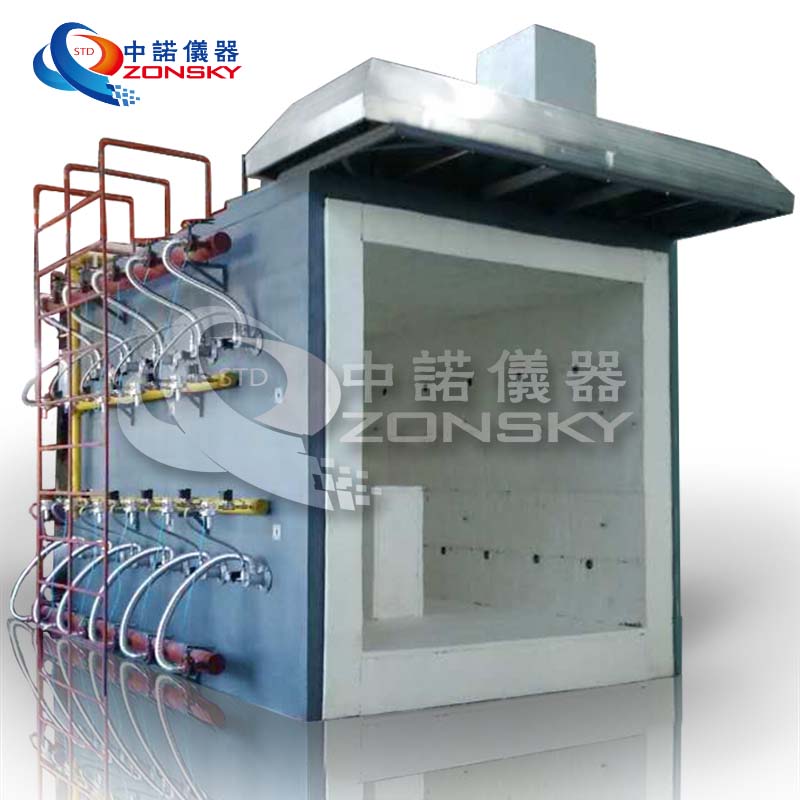In the realm of building construction and materials, fire safety is of utmost importance. Ensuring that structures are adequately protected from the ravages of fire is crucial for the safety of occupants and the preservation of property. One significant standard that plays a pivotal role in assessing the fire resistance of building components is ASTM E119.
ASTM E119 is a universally recognized standard developed by ASTM International, a premier organization dedicated to creating and publishing technical standards. The purpose of ASTM E119 is to determine the fire endurance of various building elements when subjected to specific fire exposure conditions.
The standard provides comprehensive test methods for evaluating the fire performance of structural elements, such as walls, floors, columns, beams, and roof assemblies. By subjecting these elements to controlled fire exposure, ASTM E119 enables accurate measurement and assessment of their fire resistance and overall fire safety characteristics.
ASTM E119 employs rigorous test procedures to evaluate the fire resistance of building components. The tests involve subjecting the specimens to controlled fire exposure conditions, including predetermined temperature-time curves and heat fluxes. The objective is to simulate real-world fire scenarios and assess the duration for which the elements can withstand fire without significant failure.
During the tests, critical factors such as temperature rise, structural integrity, insulation performance, and the spread of flames are monitored and analyzed. The performance criteria are based on factors like structural stability, flame penetration, heat transmission, and the maintenance of integrity and insulation.
Once the testing is complete, the specimens are evaluated based on their performance during the test duration. The outcomes are typically classified into fire-resistance ratings, represented by hours, which indicate the duration for which the tested element can withstand fire exposure.
The fire-resistance ratings determined through ASTM E119 testing are essential for various purposes, including building code compliance, architectural design, insurance requirements, and the overall assessment of fire safety measures. Architects, engineers, contractors, and regulatory authorities rely on these ratings to make informed decisions regarding the selection and installation of building materials and components.
The ASTM E119 standard offers several advantages that make it highly valuable in the field of Fire Testing and assessment. Some notable advantages include:
Consistency: ASTM E119 provides consistent test methods and performance criteria, ensuring uniformity and reliability in fire resistance evaluations.
Comprehensiveness: The standard covers a wide range of building elements, allowing for comprehensive assessments of fire performance.
Technical Expertise: ASTM International, being a renowned organization, brings together industry experts and stakeholders to develop and refine the standard continually.
Global Recognition: ASTM E119 is recognized and accepted worldwide, making it a benchmark for fire testing in various regions.
The applications of ASTM E119 extend beyond building construction and materials. It influences fire safety regulations, code development, product certifications, and the advancement of fire protection engineering as a discipline. The standard's impact is significant, shaping the practices and methodologies used to mitigate the risks associated with fire incidents.
In conclusion, ASTM E119 is a vital standard for assessing the fire resistance of building construction and materials. Its rigorous test methods, performance criteria, and consistent evaluation procedures make it an essential tool in the realm of fire safety. By adhering to ASTM E119, stakeholders can ensure that buildings are designed, constructed, and equipped with materials that can withstand fire exposure, ultimately safeguarding lives and properties.
 WhatsApp:
WhatsApp: Mobile Phone:
Mobile Phone: Contact Now
Contact Now